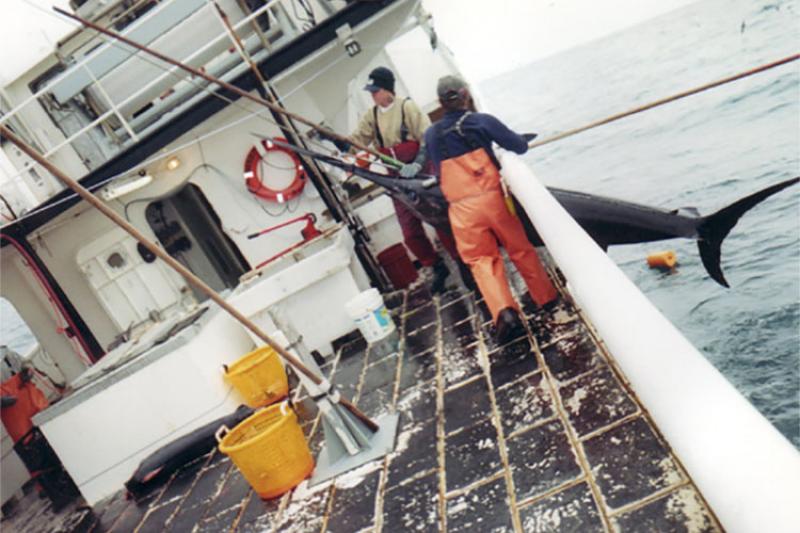NOAA Fisheries announces the issuance of an exempted fishing permit (EFP) to Dr. David Kerstetter of Nova Southeastern University to conduct research within two sub-areas in a northern portion of the East Florida Coast (EFC) PLL Closed Area and in one area open to fishing with PLL gear (see Figure 1). The overall purpose of the research project is to evaluate PLL catches and catch rates of target and non-target species from within two sub-areas in the northern portion of EFC PLL Closed Area and compare those to catch rates obtained from an area outside of the EFC PLL Closed Area to evaluate the effectiveness of existing closures at meeting current conservation and management goals under current conditions.
NOAA Fisheries published a notice of availability in the Federal Register for a Draft Environmental Assessment (EA) that analyzed the potential impacts to the human environment of granting this EFP application for experimental PLL fishing and included a 30-day public comment period (82 FR 4856; January 17, 2017). On February 15, 2017 (82 FR 10746), NOAA Fisheries extended the public comment period from February 16, 2017, until March 29, 2017, to accommodate additional public comment.
NOAA Fisheries also announces the availability of a Final EA, which includes responses to public comments. The Final EA notes that the vessels participating in this research project are already otherwise permitted to fish with PLL gear through their existing permits (tunas, swordfish, sharks). Among other analyzed impacts, the Final EA projects the annual catches of all HMS species, as well as some non-HMS species interactions, that could be expected to occur during the research. Additionally, the Final EA describes the rationale for selecting the preferred alternative and other alternatives considered for this research. Through this EFP, NOAA Fisheries is authorizing exemptions from regulations regarding two sub-areas within in the EFC PLL Closed Area and associated prohibitions, but all other requirements (e.g., size limits, seasons, quotas, reporting requirements, vessel monitoring systems (VMS), gear restrictions, individual bluefin tuna quota (IBQ) requirements) would continue to apply to the participating vessels. The research conducted within the two sub-areas in the EFC PLL Closed Area and in the open area would be carried out by no more than six PLL vessels at any one time. An additional six “backup” vessels could conduct research if any mechanical or technical issues arise on the other six vessels. The project would be authorized for 12 months and, pending annual review of any changed environmental conditions or impacts and of catches and catch rates of all species, as well as individual vessel performance, could be re-authorized for two additional 12- month periods. In response to public comment, NOAA Fisheries is limiting the research to a maximum of 720 sets per year (12 months) authorized between the six vessels. All sets would be distributed evenly between the two sub-areas in the EFC PLL Closed Area and the open area. Each set would consist of a maximum of 600 16/0 or larger circle hooks.
Related Documents
- Application (PDF, 41 pages)
- Draft Notice of Availability
- Draft Environmental Assessment (PDF, 93 pages)
- Comment Period Extension
- Final Notice of Availability
- Final Environmental Assessment (PDF, 114 pages)
- Revised Application and Proposal (PDF, 41 pages)
Copies of the Final EA may be requested from the Atlantic Highly Migratory Species Management Division (F/SF1), NOAA Fisheries, 1315 East-West Highway, Silver Spring, MD 20910. If you have any problems with these files or for more information contact either Craig Cockrell at (301) 427-8503 or Rick Pearson at (727) 824-5399.
Figure 1.



